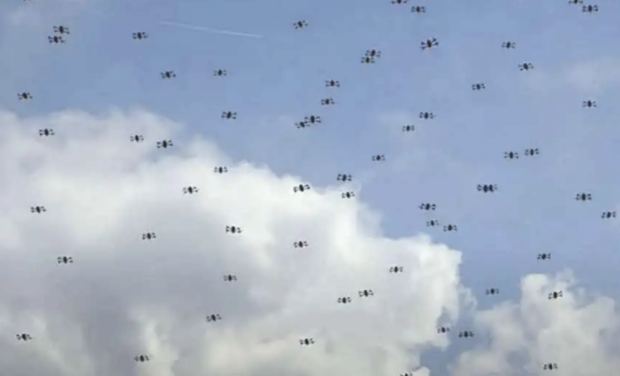and Naval Group have demonstrated that drone swarms can have other applications than saturation attacks. This was done together with the Gironde company Icarus Swarms, which has developed software allowing the evolution of several mini-drones, generally supplied by the manufacturer Parrot, which also equips the French forces .
During this demonstration, organized with the support of the Technical Section of the Army [STAT], Nexter and Naval Group first insisted on the “saturation” function, by flying a swarm of one hundred mini -drones. Which is as spectacular as it is impressive, the scene appearing to be taken from an episode of the television series Black Mirror… Having such a capacity could make it possible to inflict “considerable” damage at “lower cost” suggests Nexter/ KNDS. It all depends, in reality, on the countermeasures put in place by the adversary…
Another function explored is reconnaissance, with a formation of six micro-drones deployed from a light multi-role armored vehicle [VBMR-L] Serval. Depending on the payload carried, these devices can do real-time mapping, detect potential threats or even mark a target. That being said, the video broadcast by Nexter/KNDS does not mention other interesting capabilities, such as those consisting of luring an opposing force or jamming [or relaying] communications.
“Nexter and Naval Group have taken the initiative to experiment with solutions in order to initiate studies on this subject with the Armed Forces and the General Directorate of Armaments. We have chosen to present different functions: auto-geolocation of vehicles, real-time terrain scanning, geolocation and target aggression. Ultimately, this will increase the capabilities of Nexter and Naval Group systems [in order] to give our customers a tactical advantage over their adversary,”
explains the industrialist.
“Our swarms continue to grow… We don’t usually communicate about our work but when our customers do we are very happy,”
commented Icarus Swarms.
That being said, the DGA, via the Defense Innovation Agency [AID], has already launched, in this area, the TAMOS program [for “Tactical Multi-Objectices Swarming UAVs], entrusted to Safran Electronics & Defense and Squadrone -System.
This “project provides for the implementation of swarms of drones to enable the achievement of one or more missions, with the capacity to adapt and reconfigure fleets dynamically, all controlled by an intelligent supervisor,” explained the AID, in its activity report for the year 2022, published last June. If they are likely to be integrated into the Future Air Combat System [SCAF], the solutions developed within the framework of TAMOS could also have land and maritime applications… or even make coordination between robots of different types possible.
Source: opex360.com
Translation: Google

